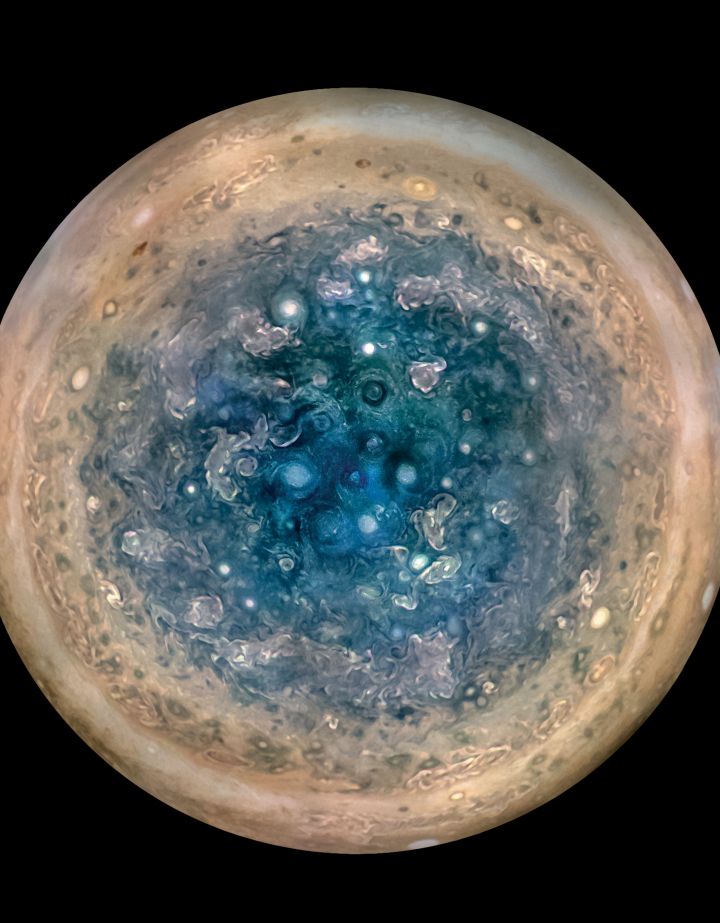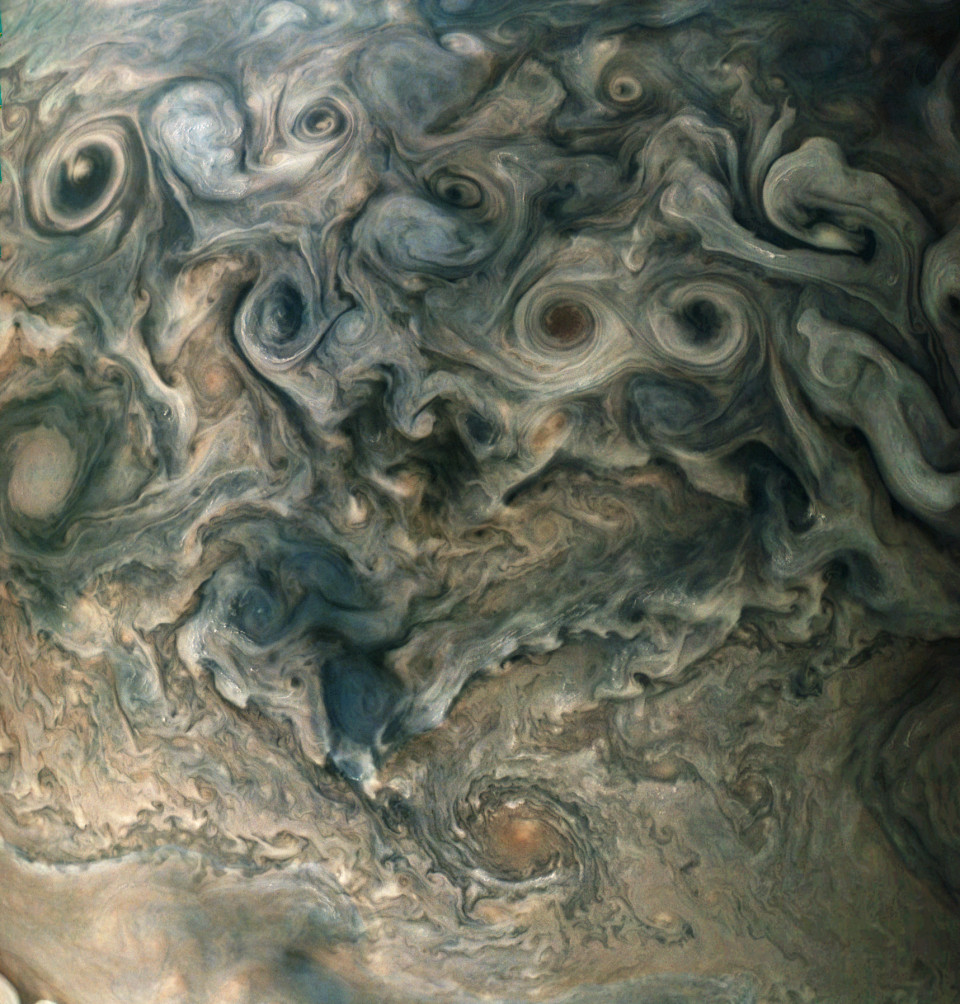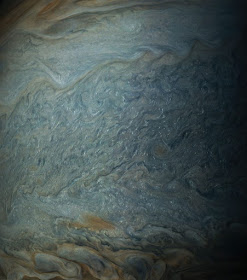Look to the south as soon as the Sun sets, and you should easily be able to pick out Jupiter. It is brighter than any of the surrounding stars, and fairly high in the sky.
 |
| Find Jupiter high in the south as soon as it is dark. Jupiter will be the brightest object in the sky besides the Moon. Image: Stellarium and Me |
 |
| Jupiter sets in the west in the wee hours of the morning. |
 |
| Saturn rises in the east at about 10:30 PM. It is easier to see by 11. |
Jupiter and Saturn will be visible all summer. If you start noticing them now, it can be fun to watch their slow progress though the backdrop of the constellations as they orbit the Sun.
When you find the planets in the sky, they just look like bright points of light. Thanks to robotic explorers built and controlled by humans on Earth, we now have studied these planets up close, and can take amazing pictures of them! The Juno mission has been orbiting Jupiter since July 4, 2016, and has recently released some incredible images of the Red Giant.
 |
| This image shows Jupiter’s south pole. The oval features
are cyclones, up to 600 miles in diameter. Multiple
images taken with the JunoCam instrument on three separate orbits were
combined to show all areas in daylight, enhanced color, and
stereographic projection. Credits: NASA/JPL-Caltech/SwRI/MSSS/Betsy Asher Hall/Gervasio Robles |
 |
| NASA / SwRI / MSSS / Gerald Eichstädt / Seán Doran © public domain |
 |
| NASA/JPL-Caltech/SwRI/MSSS/Björn Jónsson © cc nc sa |
 |
| NASA / JPL / SwRI / MSSS / Gerald Eichstädt / Alexis Tranchandon / Solaris © public domain |
 |
| Swirling Storm |
 |
| Credits: NASA/JPL-Caltech/SwRI/MSSS/Roman Tkachenko |
 |
| Image credit: NASA/SWRI/MSSS/Gerald Eichstädt/Seán Doran |
 |
| Image credit: NASA/SWRI/MSSS/Gerald Eichstädt/Seán Doran |
Remember, you can always learn the latest news from space and what's up in the night sky by visiting us at the Dome Planetarium, where we teach about space and science every day. Follow us on Facebook and Twitter for daily updates!
 |
| Beer, pizza, and the latest space news. Join us for Pub Night on June 9! |
No comments:
Post a Comment